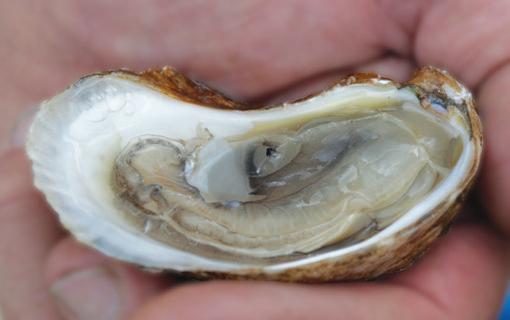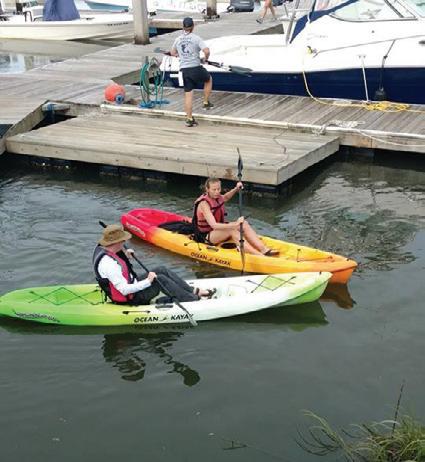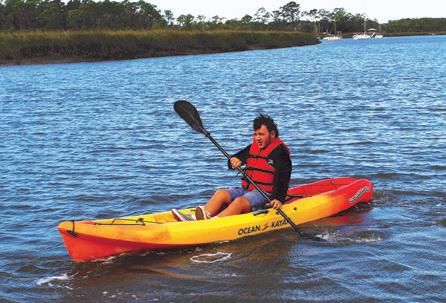
3 minute read
E ditor’s N ote Shuck it!
elcome to the first Southern Tides October Oyster Issue!
Fall is here, which means it's time for fishing, fire pits, and football, and before long, it’ll be time to trade our summertime lowcountry boils and barbecues for that other lowcountry social rite we look forward to every fall – the oyster roast.
Advertisement
It isn’t just about eating those delicious little morsels. It’s the blazing fire and scents of woodsmoke and marsh mud, the chill in the air, laughing and sharing stories with people you know and people you don’t, the camaraderie of standing around a table with those same people, and the little thrill of victory as you pop open a shell, exposing the pearly white and purple interior, encasing that perfectly roasted oyster. There's just something visceral about it. As you attend oyster roasts this fall and winter, take a moment (or several) to savor each of those sensations!
To honor this symbol of our lowcountry and coastal lifestyle and environment, we’ve dedicated this issue to oysters. If you didn't already know it to be true, you'll see from these pages that we here in the lowcountry revere the oyster.
From oyster farmer Frank Roberts quoting a French poet in Kissing the Sea on the Lips (page 15), to a contractor who designed his own oyster camouflage pattern (page 20), we hold these bivalves in high esteem. (OystaFlage - this just makes me smile every time I see it!)
"Recipe" for a Lowcountry Oyster Roast
Ingredients
• Several bushels of fresh oysters (from your favorite location)
• A hot fire
• A sheet of tin, or a grate, and a burlap bag (or a steamer)
• A big table and a couple clean trash cans
• A stack of clean shop towels and/or shucking gloves
• A couple dozen oyster knives
• A box or two of saltines (optional)
• Cocktail sauce, Frank’s Mignonette (see page 19) or hot sauce
• Cold beer or other beverage
• A good mix of people you know and people you don’t
Roasting Directions
• Place tin over a low fire or hot coals with a little clearance.
We also have an oyster map from New World Cartography (page 28). Yep! An oyster map! I love maps and charts, and I love oysters, so this is win-win in my book. (As you look it over and read the story, consider how amazing it would be to have a map of your favorite location or property.)
It really hit me as I wrote and/or edited these articles this month, just how deeply rooted oysters are in our coastal culture and our collective psyche. Dan and I, who are only just getting to know each other and hadn't discussed it prior, used very similar language in our oyster roast descriptions. Everyone I spoke with about oysters in putting this issue together expressed sentiments about the oyster as a symbol of everything they love about the lowcountry.
In addition to being key components of our culture, oysters are critical to our coastal ecosystems, through filtering water, providing habitat for other marine species, and stabilizing the banks of our creeks and rivers. This issue covers environmental and economic benefits too. Take a look at the back cover, where Zulu Marine offers information on living shorelines – a service they offer with amazing benefits for our coastal environment. Oyster shell recycling information and locations can be found on page 13.
South Carolina has a strong oyster aquaculture program going, and Dan spent a day learning about Georgia's developing program too. Learn more about it on page 24 in Positioned for Growth.
We plan to make this an annual issue, so please reach out and share your thoughts and ideas for next year. In the meantime, enjoy the read! Maybe I'll be the one standing next to you at an oyster roast sometime soon!
See you out there!
Amy Thurman
Editor in Chief
• Shovel oysters onto the tin and top with a soaking wet burlap bag. (If using a steamer, follow directions for use.) Check oysters after a bit and watch for them to just start to peek open, then use the shovel again to carry them to the table.
• Repeat as long as you have oysters.
Eating Directions
• Gather ‘round the table with an old friend at one shoulder and a potential new friend at the other and get to shuckin'. Using a towel or a glove, grab an oyster (or cluster) from the pile and turn it until you find a starting point. Start with the easiest – the shells you can separate with your hands, to rescue those oysters from getting too cold. Use the knife to separate the oyster from the shell and eat it as you prefer, whether that’s straight from the shell or on a cracker with the sauce of your choosing.
• Next work your way around the cluster to the rest of the oysters. Place your knife in the divot next to the hinge and with a gentle push and twist, pop the shell open, remove the oyster and enjoy.
• While all this is going on, sip your beer, listen to stories and tell your own, reconnect with old friends and make new ones.
• Periodically toss your shells in the bin for later recycling, and make way for others to join the table too.
• Be sure to thank your cooks and don’t let their drinks run dry.
• When the oysters are gone, gather ‘round the fire and continue with the beer sipping and storytelling.
• Repeat this recipe often throughout the winter for great eats and great memories!















